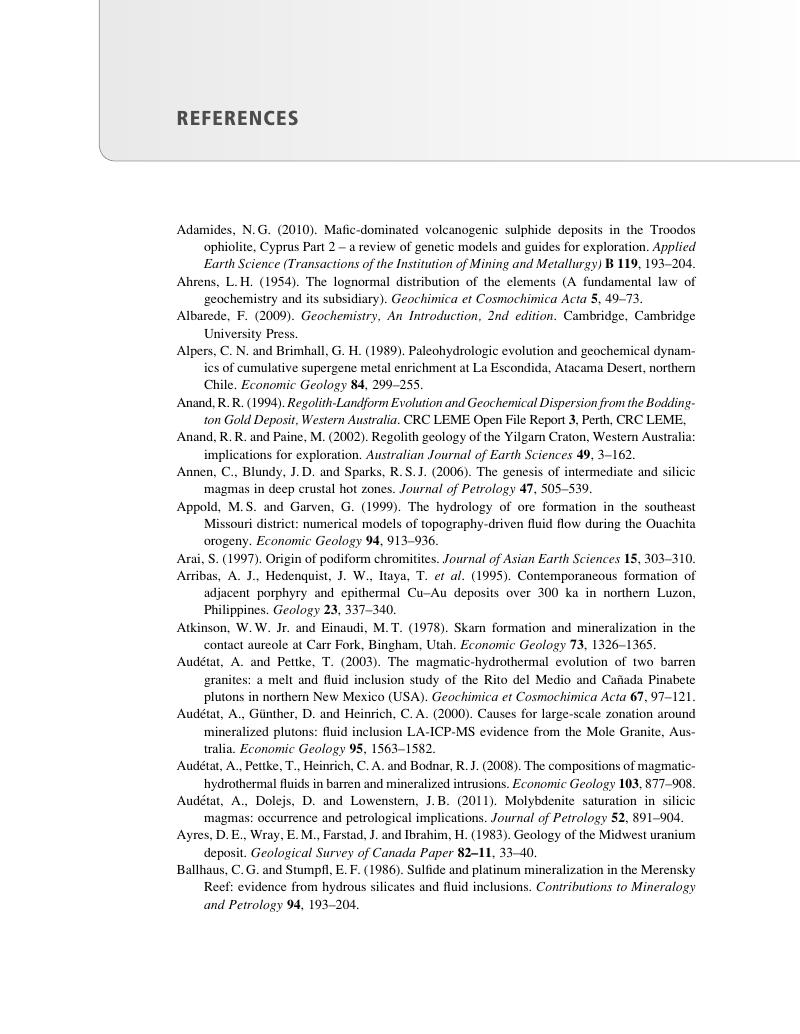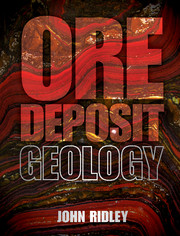Book contents
- Frontmatter
- Contents
- List of boxes
- Preface
- Acknowledgements
- 1 What is an ore deposit?
- 2 Magmatic ore deposits
- 3 Hydrothermal ore deposits I: magmatic and orogenic environments
- 4 Hydrothermal ore deposits II: sedimentary environments
- 5 Ore deposits formed in sedimentary environments
- 6 Supergene ores and supergene overprinting of ores
- Glossary
- References
- Index
- References
References
- Frontmatter
- Contents
- List of boxes
- Preface
- Acknowledgements
- 1 What is an ore deposit?
- 2 Magmatic ore deposits
- 3 Hydrothermal ore deposits I: magmatic and orogenic environments
- 4 Hydrothermal ore deposits II: sedimentary environments
- 5 Ore deposits formed in sedimentary environments
- 6 Supergene ores and supergene overprinting of ores
- Glossary
- References
- Index
- References
Summary

- Type
- Chapter
- Information
- Ore Deposit Geology , pp. 369 - 391Publisher: Cambridge University PressPrint publication year: 2013



